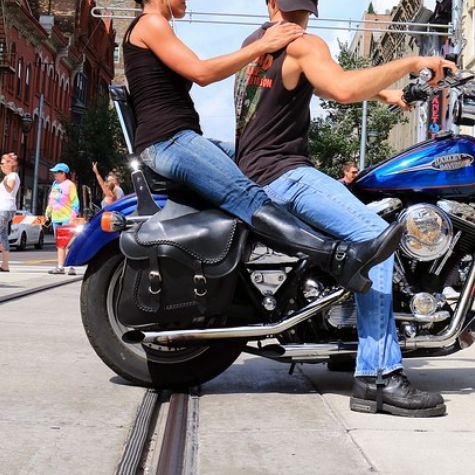

The L-Line is now fully open! Click here to learn more.
Tips for Motorists
En Español
Tips for Cyclists and Pedestrians
En Español
When making a left turn along the streetcar route, be on the lookout for both streetcars and vehicles that may be approaching from the opposite direction.
When parking along the route, make sure your entire vehicle, including side mirrors, is inside the striping on the road, and use caution when opening doors as vehicles, bikes or streetcars could be approaching from behind you.
Never park your vehicle on the streetcar tracks, even temporarily.
Pay attention to pavement markings along the route. There are certain intersections where vehicles will need to stop well before the crosswalk to allow space for The Hop to complete a turn.
Always adhere to “No Turn On Red” signs at intersections along the route. These are to allow streetcar operators to turn safely.


Only cross streetcar tracks at designated crosswalks, always wait for the appropriate signals, and always look both ways before crossing the tracks.
Never cross or run in front of an approaching streetcar, and avoid entering the trackway from between two parked vehicles.
Take a break from your electronic devices. Remove your headphones so you can hear the streetcar’s warning bells, and don’t walk and text when crossing streetcar routes.
Always cross tracks as upright and as close to a 90-degree angle as possible, and avoid riding your bike or scooter between the tracks, as it can be difficult to maneuver in such a tight space.
When turning left across the tracks, do so in two stages. First, ride in the right lane through the intersection. Then, pivot to the left to cross the tracks perpendicularly with the next green traffic signal.
Tracks can become slippery when wet and smaller tires can potentially get caught in streetcar tracks, so always exercise caution when near the tracks.
While much of the route includes clearly marked bike lanes, for less comfortable cyclists or scooter riders an alternative route is typically only a block away.


Motorcyclists should be familiar with all of the tips above for both motorists and bicyclists, as much of the same information applies, but there are a few additional helpful tips for riding along the route:
When riding parallel to the tracks, avoid riding on the rails except when crossing them. Rails can be slick, especially in inclement weather, so it’s best to ride next to them or between them rather than on them.
When changing lanes or turning across rails that are running parallel to you, start by moving away from the rail as far as possible while remaining in your lane. Then reduce your speed and cross the rail at as large of an angle as possible (the closer to 90 degrees the better, and never less than 45 degrees). Keep in mind that the entire bike should be at a large angle relative to the rail – not just the front tire.
The Hop is powered by an overhead contact system (OCS) that consists of high voltage wires located about 20 feet above the street to prevent contact by anything other than the streetcar vehicles. This is a high voltage electrical system. For safety’s sake, always assume that the electric is ON.
Stay at least 10 feet away from the overhead streetcar wires.

Deliveries to upper floors of buildings using lifts, jacks or other raised platform equipment
Using chutes or throwing debris out of windows to remove construction debris from upper floors of buildings to dumpsters below
Using scaffolding, ladders or lifts for washing windows, painting, roofing or other maintenance work
Installing wired equipment on upper floors, such as cable or satellite television connections, telecommunications devices, alarm systems, etc.
Extending mast antennas like those found on a television or media truck
We all have a role to play in preventing suicides or other mental health crises in our community by learning the warning signs, having the courage to reach out if someone is struggling, and knowing where to turn for help. If you or someone you know is experiencing a mental health crisis or having thoughts of suicide, please seek help immediately.
The National Suicide & Crisis Lifeline is available 24/7 by dialing 988 and provides free and confidential support in both English and Spanish. Learn more by visiting www.988lifeline.org.
Locally, the Milwaukee County Crisis Line is at 414-257-7222 and can connect callers to a wide range of free County services. Learn more at https://county.milwaukee.gov/EN/DHHS/BHD.
Suicide is preventable, treatments exist, and there is hope.
There are lots of ways to navigate Brew City. Explore Milwaukee’s other amazing public transit options.
Sign up to be the first to know about all the latest downtown developments and streetcar-related news — PLUS automatically be entered to win a Hop T-shirt.
Sign Up & Enter to Win